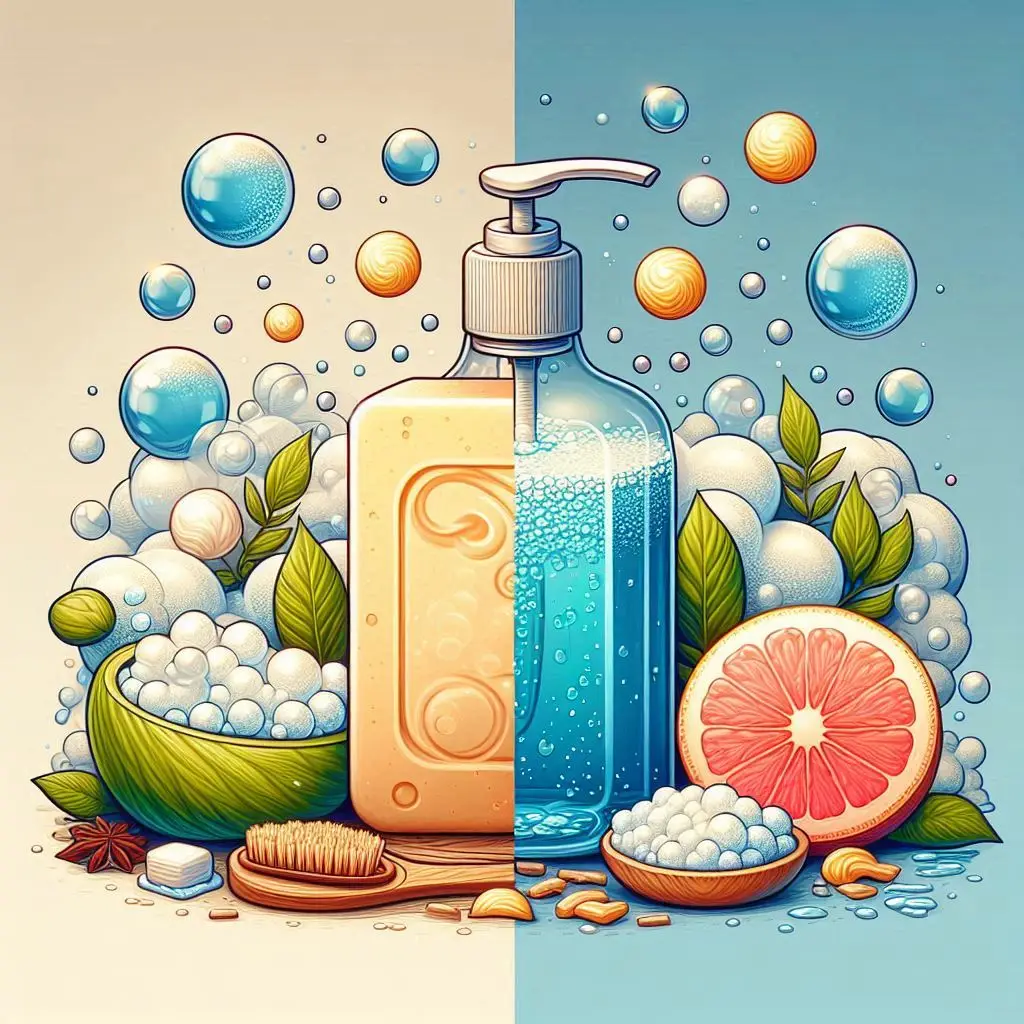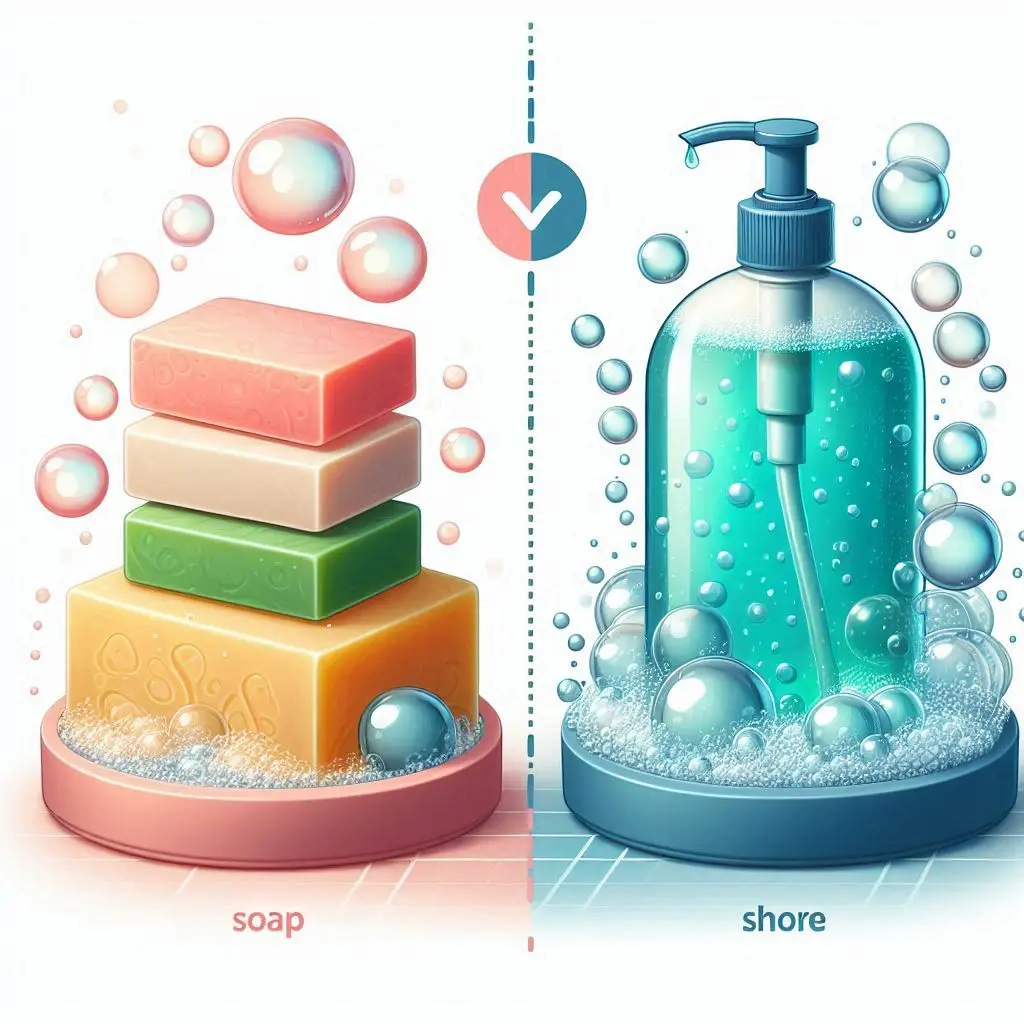Table of Contents
Shower gel and traditional soap are both popular products used for cleaning the body, but they have some important differences. Understanding these differences can help you choose the best product for your skin and shower routine. In this article, we will explore what shower gel is, how it compares to traditional soap, and the benefits and drawbacks of each. We will also look at the ingredients, uses, and how to choose the right product for your needs.

What is Shower Gel?
Shower gel is a liquid soap that is designed specifically for use in the shower. It is thicker than regular liquid soap and often comes in a bottle or tube. Shower gels are made with a combination of water, surfactants, and other ingredients that help create a rich lather when mixed with water. This lather helps to lift dirt and oil from the skin, making it easier to rinse away.
Ingredients in Shower Gel
Shower gels typically contain several key ingredients:
- Water: This is the main ingredient and serves as the base for the gel.
- Surfactants: These are compounds that help create foam and lather. Common surfactants include Sodium Lauryl Sulfate (SLS) and Sodium Coco Sulfate (SCS). They help to break down dirt and oil on the skin.
- Thickeners: These ingredients give shower gel its gel-like consistency. They help make the product easier to apply.
- Fragrance: Many shower gels have added scents, which can come from natural essential oils or synthetic fragrances. This makes the showering experience more enjoyable.
- Conditioning agents: Some shower gels include moisturizing ingredients that help keep the skin hydrated and soft.
What is Traditional Soap?
Traditional soap, often found in bar form, has been used for thousands of years. It is made through a process called saponification, which involves mixing fats or oils with an alkaline substance, such as sodium hydroxide. This process creates soap that can effectively cleanse the skin.
Ingredients in Traditional Soap
The ingredients in traditional soap can vary, but they typically include:
- Fats or oils: These can be animal fats or vegetable oils. Common examples include olive oil, coconut oil, and palm oil.
- Alkali: This is usually sodium hydroxide for bar soap. The alkali reacts with the fats to create soap.
- Fragrance: Like shower gels, traditional soaps can also contain fragrances, either natural or synthetic.
- Additives: Some soaps may include additional ingredients for exfoliation, moisturizing, or other benefits.

Key Differences Between Shower Gel and Soap
While both shower gel and traditional soap serve the same primary purpose of cleansing the skin, there are notable differences between the two.
1. Form and Texture
One of the most obvious differences is their form. Shower gel is a liquid, while traditional soap is typically a solid bar. This difference in texture can affect how each product feels when applied to the skin. Shower gel often creates a rich lather that many people find luxurious, while soap may feel more slippery.
2. Ingredients
The ingredients used in shower gels and traditional soaps differ significantly. Shower gels often contain synthetic surfactants that help create foam, while traditional soaps are made from natural fats and alkali. This difference can impact how each product interacts with the skin.
3. pH Level
Traditional soaps tend to have a higher pH, which can be drying for some skin types. The skin’s natural pH is slightly acidic, usually around 5.5. Using a product with a higher pH can disrupt the skin’s barrier, leading to dryness and irritation. Shower gels, especially those formulated for sensitive skin, often have a more balanced pH that is gentler on the skin.
4. Moisturizing Properties
Many shower gels are formulated with moisturizing ingredients that help hydrate the skin while cleansing. This can be especially beneficial for people with dry skin. Traditional soaps, on the other hand, may not have the same moisturizing properties and can sometimes leave the skin feeling tight or dry.
5. Hygiene
Shower gels are often considered more hygienic than traditional soap bars. Since shower gels are dispensed from a bottle, there is less chance of contamination from multiple users. Soap bars can harbor bacteria, especially if they are shared among family members or friends.
Benefits of Using Shower Gel
Shower gel has several advantages that make it a popular choice for many people:
- Convenience: Shower gels are easy to use and can be applied directly to the skin or a loofah. They create a rich lather quickly, making the showering process fast and efficient.
- Variety: There are many different types of shower gels available, including moisturizing, exfoliating, and scented options. This variety allows users to choose a product that suits their skin type and personal preferences.
- Gentle on Skin: Many shower gels are formulated to be gentle on the skin, making them suitable for daily use. They often contain moisturizing ingredients that help keep the skin hydrated.
- Pleasant Fragrance: Shower gels often come in a wide range of scents, which can enhance the showering experience and leave a pleasant fragrance on the skin.
Drawbacks of Using Shower Gel
While shower gel has many benefits, there are also some drawbacks to consider:
- Cost: Shower gels can be more expensive than traditional soap bars, especially if you choose premium brands.
- Packaging Waste: Shower gels are typically sold in plastic bottles, which can contribute to environmental waste. In contrast, traditional soap bars often come with minimal packaging.
- Chemical Ingredients: Some shower gels contain synthetic ingredients that may not be suitable for everyone, especially those with sensitive skin or allergies.
Benefits of Using Traditional Soap
Traditional soap also has its advantages:
- Cost-Effective: Soap bars are generally less expensive than shower gels and can last longer.
- Less Packaging: Most soap bars come with little to no packaging, making them a more environmentally friendly option.
- Variety of Formulations: There are many types of soap available, including natural and organic options that cater to different skin types and preferences.
Drawbacks of Using Traditional Soap
However, traditional soap has some downsides:
- Drying Effect: The higher pH of many soaps can be drying to the skin, especially for those with sensitive or dry skin.
- Hygiene Concerns: Soap bars can harbor bacteria, especially if shared among multiple users.
- Less Lather: Some people may find that traditional soap does not lather as well as shower gel, which can affect the overall showering experience.

Choosing the Right Product for You
When deciding between shower gel and traditional soap, consider the following factors:
- Skin Type: If you have dry or sensitive skin, you may prefer a moisturizing shower gel. If you have oily skin, traditional soap may work well for you.
- Personal Preference: Consider what you enjoy using. Some people prefer the convenience of shower gel, while others like the simplicity of soap bars.
- Environmental Impact: If reducing plastic waste is important to you, traditional soap may be the better choice.
- Budget: If cost is a concern, traditional soap bars are often more affordable and can last longer.
Conclusion
In summary, both shower gel and traditional soap have their unique benefits and drawbacks. Shower gel is a convenient and often moisturizing option that many people enjoy for its rich lather and pleasant scents. Traditional soap, on the other hand, is a cost-effective and environmentally friendly choice that has been used for centuries.Ultimately, the choice between shower gel and traditional soap comes down to personal preference, skin type, and lifestyle. By understanding the differences between these two cleansing options, you can make an informed decision that best suits your needs. Whether you choose shower gel or soap, the most important thing is to keep your skin clean and healthy!
